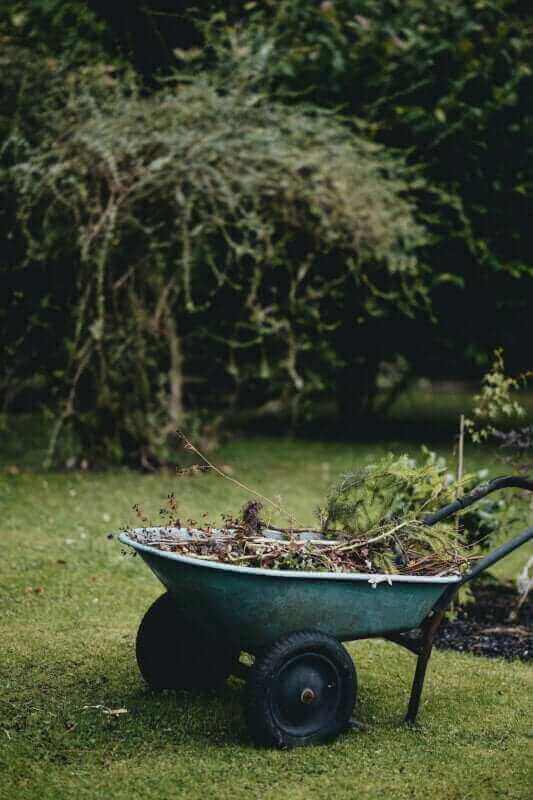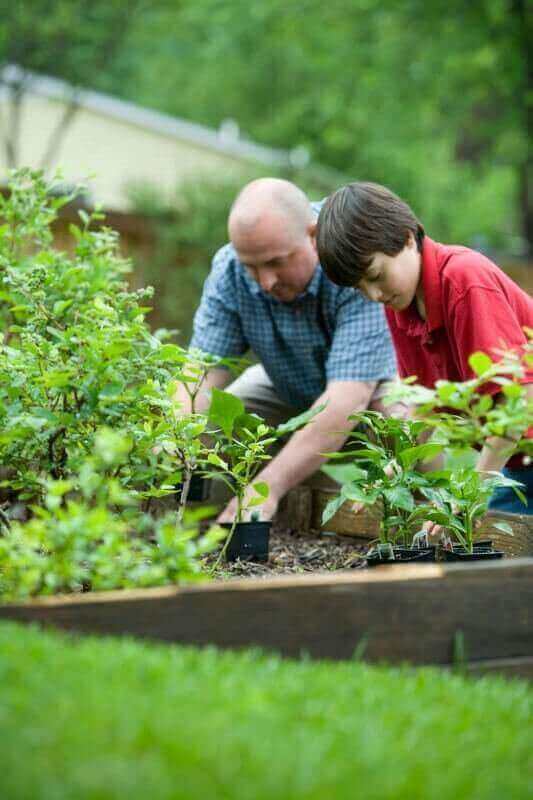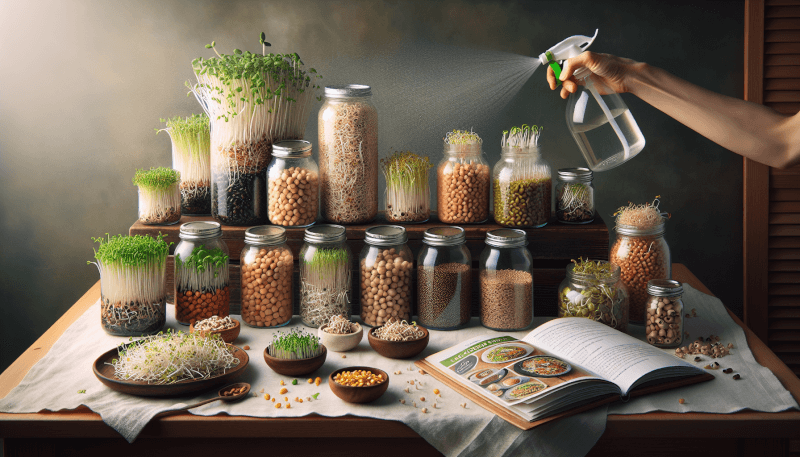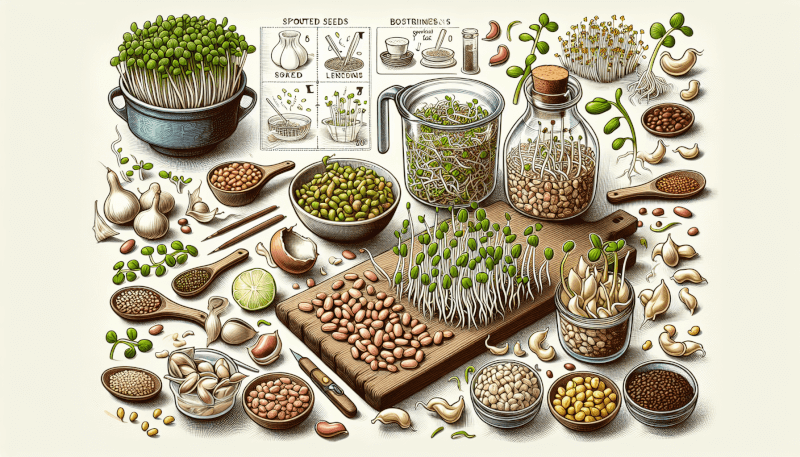👋 Click the mic button to talk to Alfred, the Todd's Seeds Gardening/Sprouting Expert – Feel free to ask him anything!
Ask Virtual Todd Anything - Click the Mic
If you’re eager to start your own garden or add some fresh, nutritious additions to your meals, sprouting seeds can be an excellent way to do it! This article provides a comprehensive guide on sprouting seeds, offering easy-to-follow steps and helpful tips to ensure successful sprouting. Whether you’re a gardening enthusiast or simply looking to incorporate more homegrown goodness into your diet, sprouting seeds is a simple and rewarding process that anyone can enjoy. So, let’s dive into the world of sprouting seeds and unlock a whole new level of farm-to-table freshness!

Choosing the Right Seeds
Consider the Purpose
When it comes to choosing the right seeds for sprouting, it’s important to consider your purpose. Are you looking to grow sprouts for salads or sandwiches? Or are you more interested in growing microgreens for added flavor and nutrients in your dishes? Understanding your purpose will help you select the appropriate seeds that meet your specific needs.
Select Organic Seeds
To ensure the healthiest and safest sprouts, it’s highly recommended to choose organic seeds. Organic seeds are free from harmful pesticides and genetically modified organisms (GMOs), which can have negative effects on both our health and the environment. By selecting organic seeds, you are not only protecting your health but also supporting sustainable farming practices.
Choose Reliable Sources
When purchasing your sprouting seeds, it’s crucial to choose reliable sources. Look for reputable suppliers who have been in the business for a while and have a good track record. This will ensure that the seeds you receive are of high quality and have been properly handled and stored. Reliable sources are also more likely to provide accurate and detailed information about the seeds, helping you make informed decisions.
Check Seed Viability
Before starting the sprouting process, it’s essential to check the viability of the seeds. This can be done by conducting a simple germination test. Take a small sample of seeds and place them in a damp paper towel or cotton cloth. Keep them in a warm and dark place for a few days and check if they sprout. If a high percentage of the seeds germinate, it indicates good seed viability. However, if only a few or none of the seeds sprout, it’s best to find a fresher batch of seeds for optimal results.
Preparing the Seeds
Cleaning and Rinsing
Properly cleaning and rinsing the seeds before starting the sprouting process is crucial to remove any dirt, debris, or potential contaminants. Begin by placing the seeds in a fine-mesh sieve or strainer and rinsing them thoroughly under cool, running water. Gently agitate the seeds to ensure all surfaces are cleaned. Take extra care while cleaning smaller seeds to prevent them from going down the drain.
Seed Soaking Methods
Soaking the seeds is an essential step in the sprouting process as it helps to soften the seed coat and promote faster and more uniform germination. There are several methods you can use to soak your seeds. One common method is the bowl method, where you simply place the seeds in a bowl filled with water and let them soak for the recommended time. Another popular method is the jar method, where you submerge the seeds in water and cover the jar with a fine-mesh sprouting lid or a mesh cloth secured with a rubber band.
Timing the Soaking
The duration of seed soaking depends on the type of seeds you are sprouting. Some seeds require only a few hours of soaking, while others may need overnight soaking. It’s essential to follow the recommended soaking times for each specific seed variety to ensure optimal germination. Over-soaking or under-soaking can negatively impact the sprouting process, leading to poor-quality sprouts.
Draining and Rinsing
After the seeds have finished soaking, it is essential to drain and rinse them thoroughly. Drain the soaked seeds by placing them in a fine-mesh sieve or colander and allowing the excess water to drain completely. Once drained, rinse the seeds under cool, running water to remove any residue or impurities. Make sure to rinse the seeds gently to avoid damaging any delicate sprouts that may have already begun to emerge.
Providing the Right Environment
Selecting a Germination Method
When it comes to germinating your sprouting seeds, there are several methods you can choose from. Some popular germination methods include using a jar, tray, bag, or paper towel. Each method has its own advantages and disadvantages, so it’s important to consider factors such as space availability, ease of use, and personal preferences when selecting a germination method that suits your needs.
Growing Medium Options
The choice of growing medium is an important factor in ensuring successful sprouting. There are various options to choose from, including soil, soilless mixes, or specialized sprouting trays with built-in growing mediums. Soilless mixes, such as coco coir or vermiculite, are popular choices for sprouting as they provide adequate moisture retention while allowing for proper aeration. Whichever growing medium you choose, make sure it is clean and free from any potential contaminants.
Ensuring Proper Temperature
Temperature plays a crucial role in sprout germination. Most seeds require temperatures between 65°F and 75°F (18°C and 24°C) for optimal germination. To ensure the right temperature is maintained, you can use a seedling heat mat, which provides a consistent and controlled warmth to the sprouting seeds. It’s important to monitor the temperature regularly and make necessary adjustments to ensure the seeds are kept within the optimal temperature range.
Providing Sufficient Moisture
Moisture is essential for sprout germination and growth. During the sprouting process, it’s important to keep the seeds consistently moist but not waterlogged. Different seeds have different moisture requirements, so it’s crucial to follow the specific instructions for each seed variety. Regularly check the moisture levels by touching the growing medium or sprouts and adjust watering accordingly. Avoid letting the seeds dry out completely or allowing excessive moisture, as both can hinder sprout development.
Germination Techniques
Jar Method
The jar method is one of the most popular and straightforward ways to sprout seeds. It involves using a glass jar with a wide mouth and a mesh lid or a mesh cloth secured with a rubber band. After soaking the seeds, they are drained and rinsed before being transferred to the jar. The jar is then placed at an angle, allowing excess water to drain out while still providing airflow. The seeds are rinsed and drained multiple times a day until they sprout and are ready for harvesting.
Tray Method
The tray method is a great option for growing a larger quantity of sprouts. It involves using shallow trays or containers with drainage holes filled with a suitable growing medium. After soaking and draining the seeds, they are spread evenly on top of the growing medium, ensuring they are not overcrowded. The trays are then watered regularly and kept in a well-ventilated area. As the seeds germinate, they are watered less frequently, allowing the sprouts to develop further.
Bag Method
The bag method is a convenient option for sprouting seeds, especially if you have limited space. It involves placing the soaked and drained seeds into a breathable bag, such as a muslin bag or a fine-mesh produce bag. The bag is then hung or placed in a well-ventilated area, ensuring good airflow. The seeds are rinsed and drained directly in the bag, and the bag is gently shaken or massaged to promote even sprouting. This method is ideal for small-scale sprouting and requires minimal equipment.
Paper Towel Method
The paper towel method is a simple and cost-effective way to sprout seeds. It involves placing the soaked and drained seeds between damp paper towels or cotton cloths. The paper towels are then folded or rolled up to trap moisture and placed in a clean container. The container is covered loosely with another damp paper towel or cloth to maintain moisture levels. The seeds are checked regularly and sprouts are harvested as soon as they emerge.
Sprouting Kits
If you’re new to sprouting or prefer a more convenient and foolproof method, sprouting kits are a great option. These kits typically include specially designed trays, screens, or racks that allow for optimal airflow and drainage, ensuring successful sprouting. Some kits may also come with pre-packaged sprouting seeds, making it easier to get started. Sprouting kits are available in various sizes and styles, allowing you to choose the one that best suits your needs.

Caring for Sprouts
Watering
Proper watering is crucial for healthy sprout growth. While it’s important to keep the sprouts moist, it’s equally important to avoid overwatering. Overwatering can lead to mold or bacterial growth, resulting in spoiled sprouts. The frequency of watering depends on the sprouting method and seed variety. Generally, it’s recommended to water sprouts once or twice a day, ensuring that the growing medium or sprouts are evenly moist but not waterlogged.
Avoiding Overcrowding
Overcrowding can negatively affect sprout growth and development. It can hinder airflow and increase moisture levels, creating an ideal environment for mold or bacterial growth. To avoid overcrowding, ensure that the seeds are evenly spaced or spread out in the growing medium. If using a tray or jar, resist the temptation to add too many seeds, as this can lead to competition for resources and hinder sprout growth.
Providing Adequate Light
Light is crucial for sprout development, as it triggers photosynthesis and promotes the production of chlorophyll. While some seeds, such as alfalfa, can sprout in low light conditions, most sprouts benefit from exposure to natural or artificial light. Place your sprouts in a well-lit area, making sure they are not exposed to direct sunlight, which can cause them to dry out or overheat. If natural light is limited, you can use fluorescent or LED grow lights specifically designed for sprouting.
Protecting from Pests
Pests can pose a significant threat to your sprouts, as they can damage or destroy the delicate plants. To protect your sprouts from pests, make sure to keep your sprouting area clean and free from any debris or food scraps that may attract unwanted visitors. Regularly inspect your sprouts for signs of pests, such as gnats or aphids, and take necessary measures to eliminate them. If necessary, you can use natural pest control methods, such as neem oil or insecticidal soap, to keep pests at bay.
Harvesting Sprouts
Determining the Right Time
The optimal time to harvest sprouts depends on the seed variety and personal preference. Generally, sprouts are ready for harvest when the first set of true leaves appears or when they reach the desired length. It’s important to monitor the sprouts closely and harvest them promptly to avoid overgrowth, which can lead to a bitter taste or tough texture. Taste a few sprouts to determine if they have reached the desired flavor and texture before harvesting the entire batch.
Methods for Harvesting
There are various methods you can use to harvest your sprouts, depending on the sprout and growing medium. For tray or jar sprouts, you can use clean scissors or a sharp knife to cut the sprouts just above the surface of the growing medium. Alternatively, you can gently pull out the sprouts from the growing medium, ensuring that the roots are removed. For bag or paper towel sprouts, carefully remove the sprouts by gently tearing off the portion you wish to harvest.
Rinsing and Draining
After harvesting the sprouts, it’s important to rinse and drain them to remove any residual growing medium or debris. Place the harvested sprouts in a fine-mesh sieve or colander and rinse them thoroughly under cool, running water. Gently agitate the sprouts to ensure all surfaces are rinsed. Once rinsed, allow the sprouts to drain completely to remove excess water. Pat them dry with a clean cloth or paper towel before storing or using them in recipes.

Storing and Using Sprouts
Proper Storage Techniques
To maximize the shelf life and freshness of your sprouts, it’s important to store them properly. Place the rinsed and drained sprouts in a clean and dry container with a breathable lid or cover. Avoid storing sprouts in airtight containers, as this can encourage moisture buildup and lead to spoilage. Store the sprouts in the refrigerator at a temperature of around 40°F (4°C) to slow down their growth and maintain their quality. Use the sprouts within a few days for the best flavor and texture.
Safety Considerations
While sprouts are highly nutritious and delicious, they can also be a potential source of foodborne illnesses if not handled and stored properly. It’s important to practice safe food handling and hygiene when working with sprouts. Always wash your hands thoroughly before handling sprouts and ensure that all utensils and surfaces are clean and sanitized. Avoid cross-contamination by keeping sprouts separate from raw meats, poultry, and other potential sources of contamination.
Including Sprouts in Recipes
Sprouts can be a versatile and nutritious addition to a wide range of dishes. Add them to salads, sandwiches, wraps, or tacos for a refreshing crunch and added nutrients. Sprouts also make a great topping for soups or stir-fries, adding a burst of flavor and texture. Experiment with different sprout varieties to find the ones that complement your favorite recipes. Just remember to add the sprouts at the end of the cooking process to preserve their fresh taste and nutritional benefits.
Freezing or Fermenting
If you have a surplus of sprouts or want to extend their shelf life, you can consider freezing or fermenting them. Freezing sprouts can help retain their nutritional value and texture. Simply blanch the sprouts in boiling water for a few seconds, then transfer them to an ice bath to cool. Once cooled, drain the sprouts and place them in airtight freezer bags or containers. Fermenting sprouts can not only enhance their flavor but also promote the growth of beneficial bacteria. Follow a specific fermentation recipe or consult a trusted source to ensure safe and successful fermentation.
Troubleshooting Common Issues
Mold or Fungus
Mold or fungus growth on sprouts can occur if they are not properly rinsed, drained, or if the growing conditions are too moist. To prevent mold or fungus, ensure that the sprouts are rinsed thoroughly and drained properly after each watering or rinsing. Maintain proper airflow and avoid overcrowding, as these factors contribute to excessive moisture. If mold or fungus does appear, discard the affected sprouts and make necessary adjustments to prevent future occurrences.
Weak or Pale Sprouts
Weak or pale sprouts can indicate insufficient light exposure or poor nutrient absorption. Make sure your sprouts are getting enough light by placing them in a well-lit area. If using artificial lights, ensure that they are the correct intensity and duration for sprout growth. Weak sprouts can also be a result of poor seed quality or improper soaking and rinsing. Consider adjusting your seed selection or reviewing your soaking and rinsing techniques to improve sprout quality.
Foul Smell
A foul smell coming from your sprouts is a sign of bacterial growth or spoilage. This can occur if the sprouts are not properly rinsed, drained, or stored. To eliminate the foul smell, discard the affected sprouts and thoroughly clean the growing containers and utensils. Review your rinsing and draining methods to ensure proper water removal and airflow. Proper storage and regular monitoring can also help prevent foul odors from developing.
Excessive Moisture
Excessive moisture can lead to mold, fungus, bacterial growth, and foul smells in your sprouts. To prevent excessive moisture, ensure that your sprouts are properly drained after each rinsing or watering. Avoid overwatering and make sure the sprouts have adequate airflow to prevent moisture buildup. If using a tray or jar method, adjust your watering schedule to match the specific moisture requirements of the seed variety you are sprouting. Regularly monitor the moisture levels and adjust as needed to maintain optimal growing conditions.

Benefits of Sprouting Seeds
Increase Nutrient Availability
Sprouting seeds increases their nutrient availability and digestibility. During the sprouting process, enzymes are activated, breaking down complex carbohydrates, proteins, and fats into simpler forms that are easier for our bodies to absorb. This enhances the nutritional value of the seeds, making sprouts an excellent source of vitamins, minerals, antioxidants, and enzymes.
Enhance Digestibility
The sprouting process also improves the digestibility of seeds. By breaking down complex molecules, sprouts become easier for our digestive system to process and absorb nutrients. The presence of enzymes in sprouts aids in the breakdown of proteins and fats, reducing the burden on our digestive system. This makes sprouts a gentle and easily digestible food, suitable for individuals with digestive issues or sensitive stomachs.
Boost Enzyme Activity
Enzymes play a vital role in our body’s biochemical processes. Sprouts are rich in enzymes, as they are produced and activated during the sprouting process. These enzymes help facilitate various metabolic reactions in our bodies, promoting optimal functioning of our digestive, immune, and cardiovascular systems. Incorporating sprouts into your diet provides a natural and wholesome way to boost enzyme activity and support overall health.
Support Sustainable Agriculture
By sprouting your own seeds, you can actively participate in sustainable agriculture practices. Sprouting allows you to grow your own fresh and nutritious food without relying on external sources. This reduces the need for transportation, packaging, and commercial farming methods, which have a significant environmental impact. Sprouting seeds at home is a great way to support sustainable food production, conserve resources, and reduce your carbon footprint.
Safety Precautions
Adequate Seed Washing
Thoroughly washing your sprouting seeds before soaking and germinating is essential to remove any potential contaminants. Rinse the seeds under cool, running water, ensuring that all surfaces are cleaned. This step helps remove any dirt, debris, or bacteria that may be present. Clean seeds reduce the risk of foodborne illnesses and ensure the safety and quality of your sprouts.
Proper Handling Practices
Practicing proper handling practices when working with sprouts is crucial to prevent cross-contamination and ensure food safety. Always wash your hands thoroughly before handling the seeds or sprouts. Use clean utensils and equipment and sanitize them regularly. Avoid touching the sprouts with bare hands, especially if you have cuts or open wounds. By following proper handling practices, you can minimize the risk of foodborne illnesses and maintain the integrity of your sprouts.
Avoiding Contaminated Seeds
To ensure the safety of your sprouts, it’s important to use uncontaminated seeds from reliable sources. Contaminated seeds may contain harmful bacteria, such as Salmonella or E. coli, which can lead to foodborne illnesses. Choose reputable suppliers that provide seeds specifically labeled for sprouting. Avoid using seeds meant for planting in the ground, as they may have been treated with chemicals or fertilizers not suitable for human consumption.
Safe Consumption Practices
While sprouts are highly nutritious, they can also pose a risk of foodborne illnesses if not consumed safely. It’s important to consume sprouts while they are fresh and within their shelf life. Discard any sprouts that appear slimy, discolored, or have a foul odor. Rinse the sprouts thoroughly before consuming, even if you plan to cook them. If you have a compromised immune system or are pregnant, it’s recommended to avoid consuming raw sprouts due to the potential risk of harmful bacteria.
